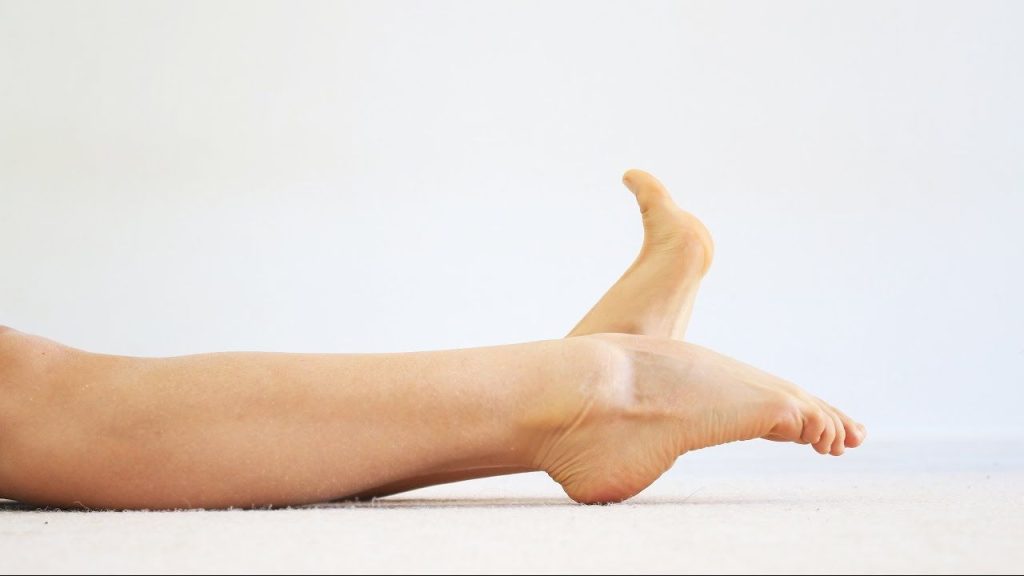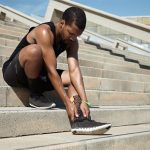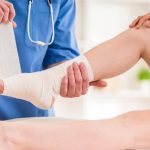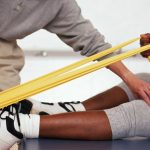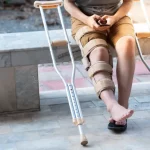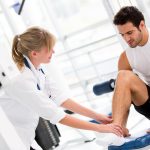These 9 moves can also help prevent strains and sprains
Updated on February 15, 2023
Medically reviewed by Mohamad Hassan, PT
When you experience an ankle or foot injury, exercises are likely to be recommended as part of your recovery. A well-structured physical therapy program can stretch and strengthen muscles in the lower leg and foot, helping restore stability, flexibility, and balance.
Ankle pumps, the bent-knee wall stretch, and toe pick-ups are just some of the moves you may be prescribed. In addition to helping heal your injury, these and other exercises may help prevent new sprains or strains, too.1
This article gives you step-by-step instructions on how to do nine different exercises for foot and ankle injuries, including those mentioned. It also offers guidance for when to seek additional medical care.
Getting Started
Any foot or ankle exercises should be done under the guidance of a healthcare provider. It’s important that they ensure the moves are safe for you, especially if you have undergone foot or ankle surgery.
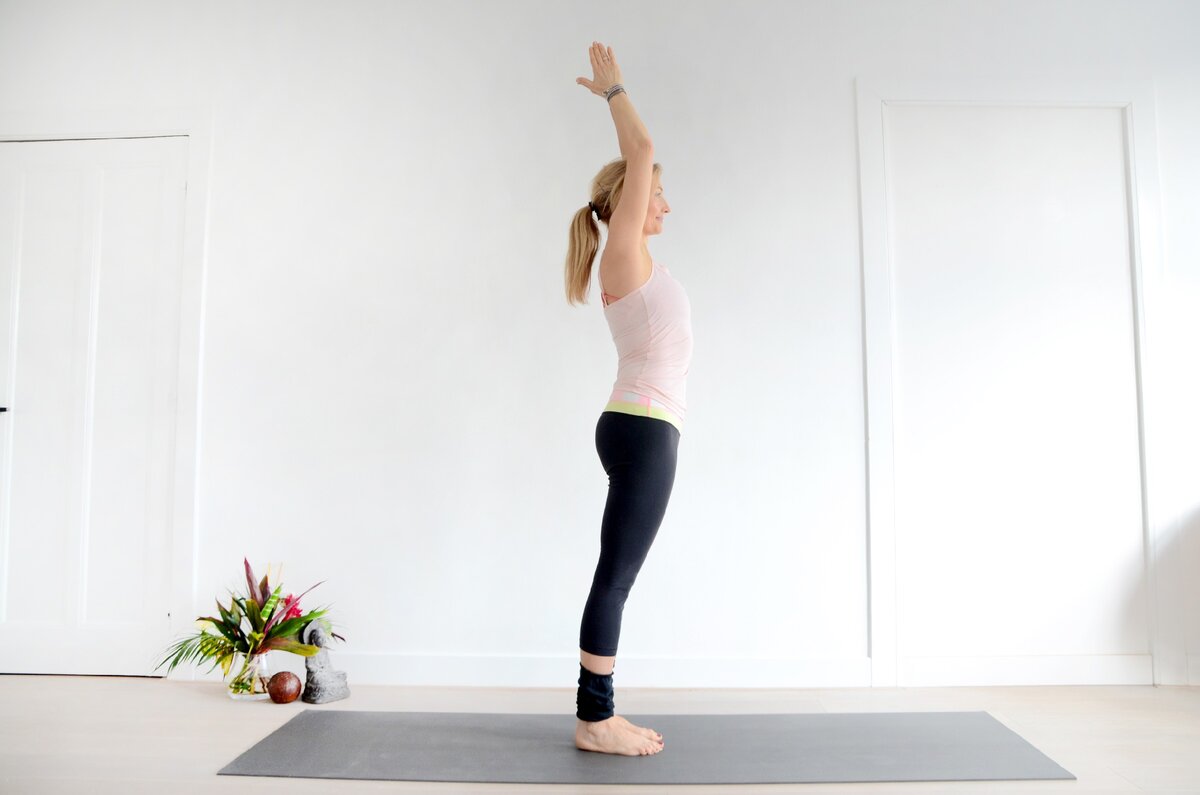
They may green-light the following set of exercises, a modified version of this, or something else entirely.
The following program is meant to be performed three times per day. These exercises work to stretch your tendons and ligaments to improve the range of motion of the affected joints.1
Before starting the routine, warm up with 5 to 10 minutes of low-impact activity, like walking or riding a stationary bicycle. As you get stronger, you can move from these stretch exercises to active strength training.
Stop if you feel any pain!
Ankle Pump-Ups
Static stretching has been shown to improve the upward movement of the foot (ankle dorsiflexion) when combined with standardized care.2 Ankle pump-ups increase ankle dorsiflexion and strengthen the muscles in the front of your lower leg (shin).
You can do this exercise seated or by standing and holding onto a wall or counter. To begin:
- Point your toes upward like you are trying to touch your toes to the front of your shin.
- Hold this position for 30 seconds, maintaining constant tension.
- Release.
- Repeat 5 times for each leg.
EXERCISES FOR THE ANKLE JOINT. SET №5 IS AIMED AT STRETCHING THE MUSCLES (IMPROVEMENT OF FLEXIBILITY OF THE MUSCULAR APPARATUS) AND INCREASE OF THE RANGE OF JOINT MOVEMENT
For additional information about the recovery process after an ankle fracture, you can watch a video demonstrating exercises and rehabilitation recommendations.
Ankle Pump-Downs
This exercise helps increase ankle plantarflexion (downward movement of the foot) and strengthen the muscles in the back of your lower leg (calf). This includes the gastrocnemius and soleus muscles that taper at the base of the calf and merge with the Achilles tendon.
There is some evidence that stretching the calf muscle will improve ankle plantarflexion.3
You can do ankle pump-downs seated or by standing and holding onto a wall or counter:
- Point your foot and toes downward as far as you can go. You should feel your calf muscles flexing at the back of your leg.
- Hold this position for 30 seconds, maintaining constant tension.
- Release.
- Repeat 5 times for each leg.
EXERCISES FOR THE ANKLE JOINT. SET №6D IS AIMED AT STRENGTHENING OF THE MUSCLES AND IMPROVEMENT OF PROPRIOCEPTION AND STABILITY OF THE ANKLE AND ENTIRE LOWER LIMB. INITIAL STAGE
Bent-Knee Wall Stretch
This exercise mainly stretches the soleus muscle on the inside of the calf, which is particularly helpful for recovery from disuse muscle atrophy.1 To begin:
- Line yourself up squarely in front of a wall.
- Press your hands against the wall for balance.
- Place one foot behind you and the other just in front.
- Keeping your knees slightly bent and both heels solidly on the floor, press your hips forward until you feel a stretch along the back of your calf.
- Hold for 30 seconds, maintaining the tension.
- Release.
- Start with three sets of 10 exercises for each leg, working your way up to three sets of 30 exercises.
EXERCISES FOR THE ANKLE JOINT. SET №6E IS AIMED AT STRENGTHENING OF THE MUSCLES AND IMPROVEMENT OF PROPRIOCEPTION AND STABILITY OF THE ANKLE AND ENTIRE LOWER LIMB. MID STAGE
Straight-Knee Wall Stretch
This exercise—sometimes referred to as the runner’s stretch—helps stretch the entire gastrocnemius-soleus muscle complex.
To begin:
- Line yourself up squarely in front of a wall.
- Press your hands against the wall for balance.
- Place one foot behind you and the other just in front.
- Keeping both heels flat on the floor, press your hips forward until you feel a solid stretch along the entire calf. Hold for 30 seconds.
- Release.
- Start with three sets of 10 exercises for each leg, working your way up to three sets of 30 exercises.
EXERCISES FOR THE ANKLE JOINT. SET №6F IS AIMED AT STRENGTHENING OF THE MUSCLES AND IMPROVEMENT OF PROPRIOCEPTION AND STABILITY OF THE ANKLE AND ENTIRE LOWER LIMB. ADVANCED STAGE
Toe Pick-Ups
This exercise helps to strengthen your toes and improve their flexibility. The movement of the toes is directed by a complex set of muscles (primarily the flexor digitorum brevis and extensor digitorum brevis muscles) that are easily impaired with a foot or ankle injury.4
To begin:
- Place a pile of 20 small objects on the floor (like hard candies, marbles, or tiny stones).
- Use your toes to pick them up and move them to another pile.
- Do three sets of this exercise three times per day.
EXERCISES FOR POST-TRAUMATIC CORRECTION AND REHABILITATION OF GAIT. INITIAL STAGE – SET 1
For additional information about Post-traumatic rehabilitation of gait disorders you can watch a video demonstrating exercises and rehabilitation recommendations.
Heel Raises
This exercise helps to strengthen your toes, feet, and calves.5 To do it:
- Holding a wall or counter for balance.
- Rise up onto your tiptoes as far as you can go without pain.
- Hold the position for 10 seconds, maintaining the tension.
- Release.
- Start with three sets of 10 exercises and work your way up to three sets of 30 exercises.
As you get stronger, you can begin to do single-leg toe raises, which place additional weight on each leg.
EXERCISES FOR POST-TRAUMATIC CORRECTION AND REHABILITATION OF GAIT. MIDDLE STAGE – SET 2
Plantar Fascia Massage
This exercise directly massages the plantar fascia, the thick band of tissue that connects the heel bone to the toes. This is an ideal treatment for plantar fasciitis, a common chronic condition caused by inflammation of the fibrous tissue.6
To begin:
- Sit comfortably in a chair and cross one leg over the opposite knee.
- With one hand, pull your toes back until the foot is fully dorsiflexed. There should be tension but no pain.
- With the other hand, massage the bottom of your foot immediately in front of the heel.
- Do this for 10 minutes three times per day.
EXERCISES FOR POST-TRAUMATIC CORRECTION AND REHABILITATION OF GAIT. ADVANCED STAGE – SET 3
Towel Calf Stretch
This assisted exercise helps to increase ankle dorsiflexion and stretch the calf muscles safely and effectively.1
To begin:
- Sit comfortably on the floor and keep your knees straight.
- Looping a towel around your foot, pull the back until you start to feel a concerted stretch in your calf muscle.
- Hold the position for 30 seconds.
- Start with three sets of 10 exercises for each leg, and work your way up to three sets of 30 exercises.
If you have trouble sitting upright on the floor, you can either sit with your back against the wall for support or place a cushion beneath your buttocks to elevate the hips.
Some people will do this exercise with both legs at once, but this tends to cause the foot and ankle to supinate (splay outward) and may end up exacerbating an ankle injury.
EXERCISES FOR POST-TRAUMATIC CORRECTION AND REHABILITATION OF GAIT. VERY ADVANCED STAGE – SET 4
Ice Bottle Massage
This is a great exercise for cooling down (literally). You would need to prepare by filling a plastic bottle (like a disposable 32-ounce sports drink bottle) with water and freezing it overnight.
To round out your exercise routine:
- Place the frozen water bottle on the floor.
- Roll your foot over it for five minutes three times per day. Always keep your foot moving; don’t stop and let the bottle rest on one spot.
If the cold causes discomfort, you can place a kitchen towel between the bottle and your foot. If there is pain or a prickly sensation, stop and avoid this exercise. This is especially true for people with diabetic neuropathy.
By Terence Vanderheiden, DPM
Terence Vanderheiden, DPM, is a podiatrist in Massachusetts with a subspecialty in the area of podiatric sports medicine.
FREQUENTLY ASKED QUESTIONS
When will I be able to walk after a broken ankle?
If you don’t need surgery, you might be able to walk on your own within six to eight weeks. If your fracture did require surgery, you may get a walking cast after two weeks; four to six weeks later, you may be able to apply some weight and be moved to a cast with a walker or crutches. It may then be a few more weeks before you can fully bear your weight and walk without any aids.
Learn More When Can I Start Running After an Ankle Fracture?
What exercises should I do once I’m out of an ankle cast?
Begin with range of motion exercises. A physical therapist can maneuver your ankle at first. Then you will begin exercises on your own such as pointing your toes and moving your foot in and out. These may be slightly painful as you get used to moving the joint again, but they should not cause severe or lasting pain.

Demo versions of GHRS sets of exercises for the Lower Limb Problems and Post-traumatic rehabilitation of gait disorders on YouTube
You can find more information about the Lower Limb Problems and Post-traumatic rehabilitation of gait disorders in our BLOG
Our website presents sets of exercises for rehabilitation of the ankle joint and gait disorders in the following four areas:
-
EXERCISES FOR THE ANKLE JOINT. SET №5 IS AIMED AT STRETCHING THE MUSCLES (IMPROVEMENT OF FLEXIBILITY OF THE MUSCULAR APPARATUS) AND INCREASE OF THE RANGE OF JOINT MOVEMENT
-
EXERCISES FOR THE ANKLE JOINT. SET №6D IS AIMED AT STRENGTHENING OF THE MUSCLES AND IMPROVEMENT OF PROPRIOCEPTION AND STABILITY OF THE ANKLE AND ENTIRE LOWER LIMB. INITIAL STAGE
-
EXERCISES FOR THE ANKLE JOINT. SET №6E IS AIMED AT STRENGTHENING OF THE MUSCLES AND IMPROVEMENT OF PROPRIOCEPTION AND STABILITY OF THE ANKLE AND ENTIRE LOWER LIMB. MID STAGE
-
EXERCISES FOR THE ANKLE JOINT. SET №6F IS AIMED AT STRENGTHENING OF THE MUSCLES AND IMPROVEMENT OF PROPRIOCEPTION AND STABILITY OF THE ANKLE AND ENTIRE LOWER LIMB. ADVANCED STAGE
-
EXERCISES FOR POST-TRAUMATIC CORRECTION AND REHABILITATION OF GAIT. INITIAL STAGE – SET 1
-
EXERCISES FOR POST-TRAUMATIC CORRECTION AND REHABILITATION OF GAIT. MIDDLE STAGE – SET 2
-
EXERCISES FOR POST-TRAUMATIC CORRECTION AND REHABILITATION OF GAIT. ADVANCED STAGE – SET 3
-
EXERCISES FOR POST-TRAUMATIC CORRECTION AND REHABILITATION OF GAIT. VERY ADVANCED STAGE – SET 4
Sources
https://www.verywellhealth.com/foot-ankle-exercises-1337676
- American Academy of Orthopaedic Surgeons: OrthoInfo. Foot and ankle conditioning program.
- Terada M, Pietrosimone BG, Gribble PA. Therapeutic interventions for increasing ankle dorsiflexion after ankle sprain: a systematic review. J Athl Train. 2013;48(5):696-709. doi:10.4085/1062-6050-48.4.11
- Medeiros DM, Martini TF. Chronic effect of different types of stretching on ankle dorsiflexion range of motion: Systematic review and meta-analysis. Foot (Edinb). 2018;34:28-35. doi:10.1016/j.foot.2017.09.006
- American Orthopaedic Foot and Ankle Society. Foot flexibility exercises.
- Chiu LZF, Dæhlin TE. Midfoot and ankle mechanics in block and incline heel raise exercises. J Strength Cond Res. 2021;35(12):3308–14. doi:10.1519/JSC.0000000000004145
- U.S. National Library of Medicine: MedlinePlus. Plantar fasciitis.

